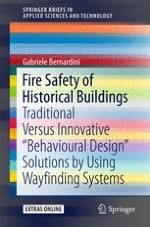2017 | OriginalPaper | Buchkapitel
4. Application to a Case Study: Fire Safety in Historical Theaters
verfasst von : Gabriele Bernardini
Erschienen in: Fire Safety of Historical Buildings
Aktivieren Sie unsere intelligente Suche, um passende Fachinhalte oder Patente zu finden.
Wählen Sie Textabschnitte aus um mit Künstlicher Intelligenz passenden Patente zu finden. powered by
Markieren Sie Textabschnitte, um KI-gestützt weitere passende Inhalte zu finden. powered by
